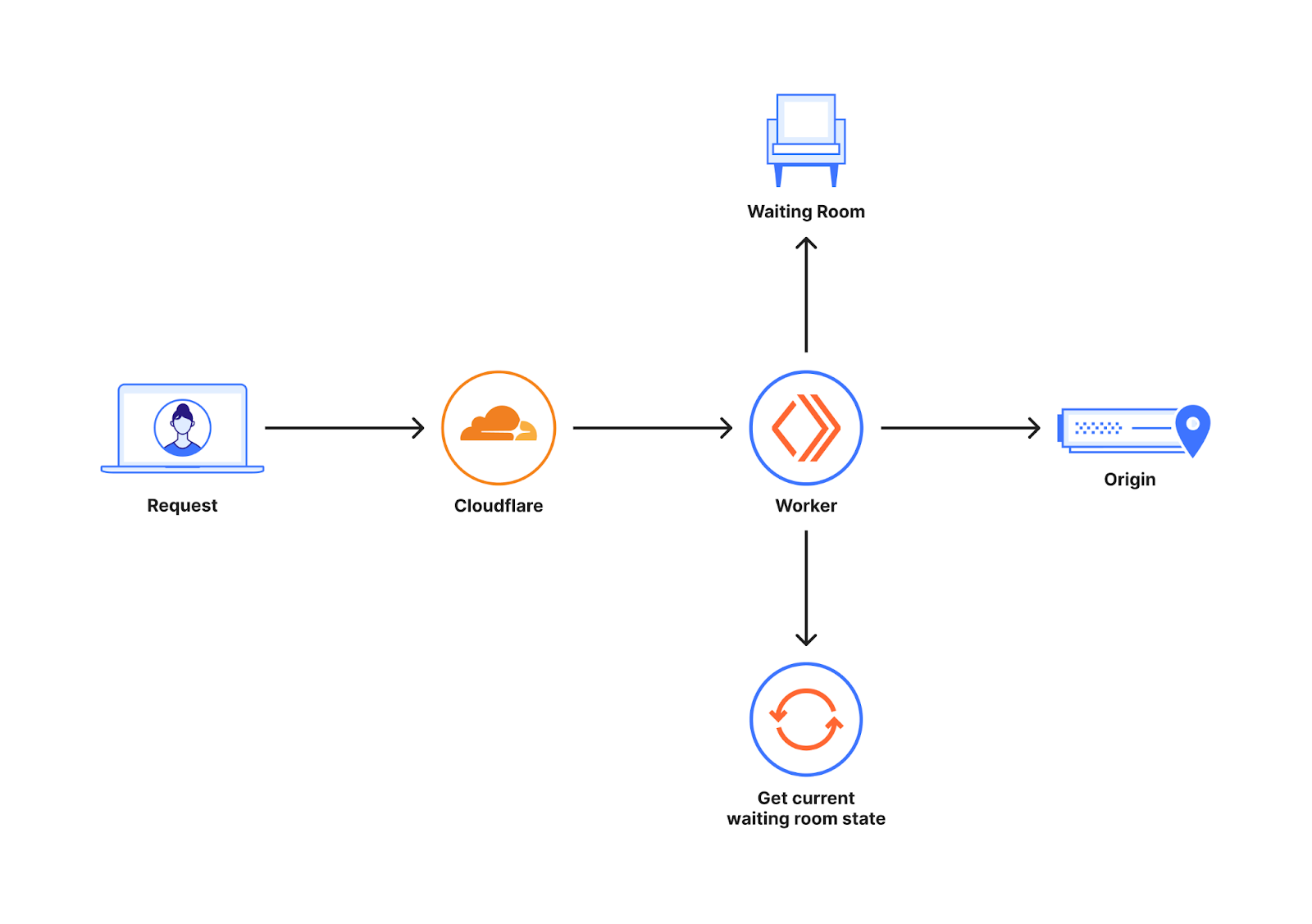Day Two Cloud 211: Cloud Security Acronym Soup With Jo Peterson
Today on Day Two Cloud we go deep on new areas of cloud security that you may not be familiar with. There are forces out there that are driving the rise of new security tools and processes, and we bring back guest Jo Peterson to help us make sense of it all.How SASE Can Help Enterprises with Network Expansion and Protection
SASE offers streamlined provisioning and enhanced security when adding remote offices, WFH sites, and mobile workers to enterprise networks.How Waiting Room makes queueing decisions on Cloudflare’s highly distributed network


Almost three years ago, we launched Cloudflare Waiting Room to protect our customers’ sites from overwhelming spikes in legitimate traffic that could bring down their sites. Waiting Room gives customers control over user experience even in times of high traffic by placing excess traffic in a customizable, on-brand waiting room, dynamically admitting users as spots become available on their sites. Since the launch of Waiting Room, we’ve continued to expand its functionality based on customer feedback with features like mobile app support, analytics, Waiting Room bypass rules, and more.
We love announcing new features and solving problems for our customers by expanding the capabilities of Waiting Room. But, today, we want to give you a behind the scenes look at how we have evolved the core mechanism of our product–namely, exactly how it kicks in to queue traffic in response to spikes.
How was the Waiting Room built, and what are the challenges?
The diagram below shows a quick overview of where the Waiting room sits when a customer enables it for their website.

Waiting Room is built on Workers that runs across a global network of Cloudflare data centers. The requests to a customer’s website can Continue reading
Protocolo SNMP e Suas Traps: Explicação e Tendências
The post Protocolo SNMP e Suas Traps: Explicação e Tendências appeared first on Noction.
El Protocolo SNMP Explicado: Trampas SNMP
The post El Protocolo SNMP Explicado: Trampas SNMP appeared first on Noction.
Addresses in a Networking Stack
After discussing names, addresses and routes, it’s time for the next question: what kinds of addresses do we need to make things work?
End-users (clients) are usually interested in a single thing: they want to reach the service they want to use. They don’t care about nodes, links, or anything else.
End-users might want to use friendly service names, but we already know we need addresses to make things work. We need application level service identifiers – something that identifies the services that the clients want to reach.
Addresses in a Networking Stack
After discussing names, addresses and routes, it’s time for the next question: what kinds of addresses do we need to make things work?
End-users (clients) are usually interested in a single thing: they want to reach the service they want to use. They don’t care about nodes, links, or anything else.
End-users might want to use friendly service names, but we already know we need addresses to make things work. We need application level service identifiers – something that identifies the services that the clients want to reach.
VRF Route Leaking with a FTD
Just had a blast playing with VRF Route Leaking with a FTD. It is so cool and super simple to do. Let’s say you have a Cisco Firewall, a 3140 FTD in this instance, and you want to have varying... Read More ›
The post VRF Route Leaking with a FTD appeared first on Networking with FISH.
Simple or Complex?
A few weeks ago, Daniel posted a piece about using different underlay and overlay protocols in a data center fabric. He says:
There is nothing wrong with running BGP in the overlay but I oppose to the argument of it being simpler.
One of the major problems we often face in network engineering—and engineering more broadly—is confusing that which is simple with that which has lower complexity. Simpler things are not always less complex. Let me give you a few examples, all of which are going to be controversial.
When OSPF was first created, it was designed to be a simpler and more efficient form of IS-IS. Instead of using TLVs to encode data, OSPF used fixed-length fields. To process the contents of a TLV, you need to build a case/switch construction where each possible type a separate bit of code. You must count off the correct length for the type of data, or (worse) read a length field and count out where you are in the stream.
Fixed-length fields are just much easier to process. You build a structure matching the layout of the fixed-length fields in memory, then point this structure at the packet contents in-memory. From there, Continue reading